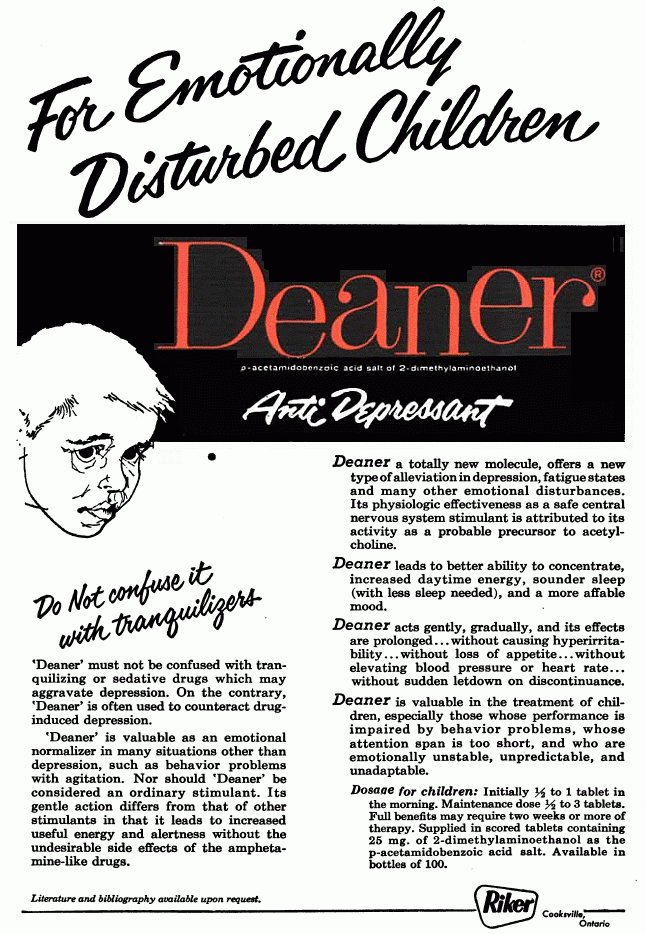

|
|
Deaner advertisement, 1959. Canadian Medical Association Journal, Vol. 80, No. 12, p. 73. For Emotionally Disturbed Children Deaner® p-acetamidobenzoic acid salt of 2-dimethylaminoethanol Anti Depressant Deaner - a totally new molecule, offers a new type of alleviation in depression, fatigue states and many other emotional disturbances. Its physiologic effectiveness as a safe central system stimulant is attributed to its activity as a probable precursor to acetylcholine. Deaner leads to better ability to concentrate, increased daytime energy, sounder sleep (with less sleep needed), and a more affable mood. Deaner acts gently, gradually, and its effects are prolonged... without causing hyperirritability... without loss of appetite... without elevating blood pressure or heart rate... without sudden letdown on discontinuance. Deaner is valuable in the treatment of children, especially those whose performance is impaired by behavior problems, whose attention span is too short, and who are emotionally unstable, unpredictable, and unadaptable. Dosage for children: Initially 1/2 to 1 tablet in the morning. Maintenance dose 1/2 to 3 tablets. Full benefits may require two weeks or more of therapy. Supplied in scored tablets containing 25 mg. of 2-dimethylaminoethanol as the p-acetamidobenzoic acid salt. Available in bottles of 100. Do not confuse it with tranquilizers 'Deaner' must not be confused with tranquilizing or sedative drugs which may aggravate depression. On the contrary, 'Deaner' is often used to counteract drug-induced depression. 'Deaner' is valuable as an emotional normalizer in many situations other than depression, such as behavior problems with agitation. Nor should 'Deaner' be considered an ordinary stimulant. Its gentle action differs from that of other stimulants in that it leads to increased useful energy and alertness without the undesirable side effects of the amphetamine-like drugs. Literature and bibliography available upon request. Riker Cooksville, Ontario – Council on Drugs: New and Nonoffical Drugs, JAMA, Vol. 172, No. 14 (April 2, 1960), pp. 1518-1519. |